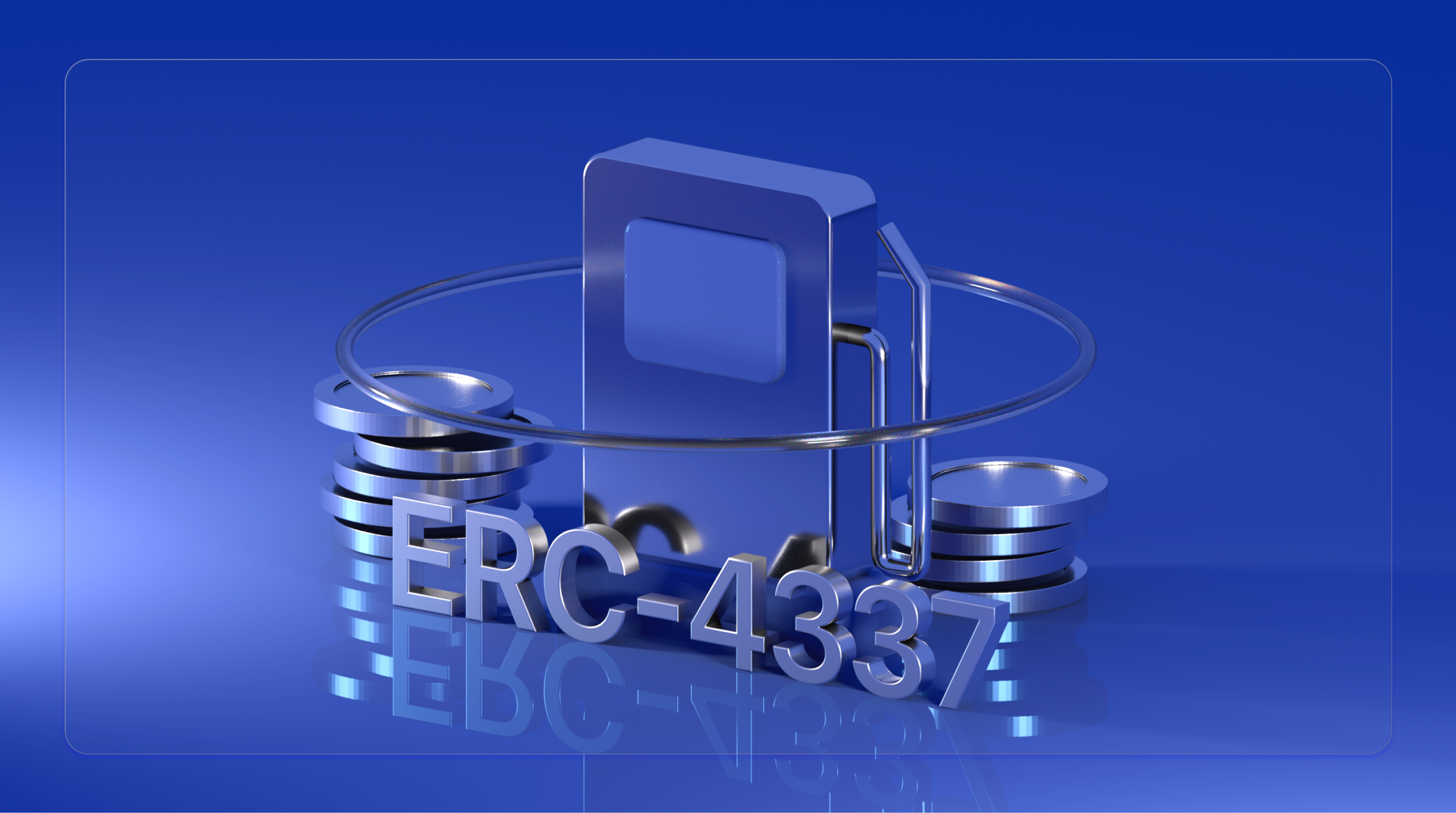We are welcoming you to our weekly digest! Here, we discuss the latest trends and advancements in account abstraction, chain abstraction and everything related, as well as bring some insights from Etherspot’s kitchen.
The latest news we’ll cover:
-
Vitalik Proposes 16.7M Gas Cap to Rein In Transaction Bloat
-
ERC-4337 Documentation Updated
-
Intents 2.0: Resource Locks Secure Cross-Chain UX
-
Status Rolls Out Gasless L2 on Linea zkEVM
-
PrepaidGas: Privacy-Preserving Paymaster
Please fasten your belts!
Vitalik Proposes 16.7M Gas Cap to Rein In Transaction Bloat
A new EIP-7983, co-authored by Vitalik Buterin and Toni Wahrstätter, seeks to limit the maximum gas a single transaction can consume to 16,777,216 units — half of a typical block’s gas limit.
The hard cap aims to prevent individual transactions from monopolising block resources, improve parallel execution efficiency for zero-knowledge VMs and other engines, and simplify downstream engineering by enforcing predictable size boundaries.
Under the current design, one transaction may consume an entire block’s gas, leading to inefficiencies and uneven workload distribution. By imposing the proposed ceiling, large operations such as contract deployments would need to be split into smaller chunks, though proponents argue most real-world use cases already fall below the new limit.
EIP-7983 builds on earlier resource-bounding efforts like EIP-7825 and aligns with Ethereum’s modularity goals, ensuring tighter execution guarantees at the base layer. The draft proposal is now open for community review and discussion.

ERC-4337 Documentation Updated
ERC-4337 has updated its documentation, consolidating specifications, guides, and best practices for account abstraction without protocol changes.
The refreshed GitBook covers UserOperation lifecycles, EntryPoint contracts, paymasters, bundler compatibility, modular smart-account standards (including EIP-7701 and ERC-7562), L2 integrations, and developer resources such as monitoring tools and security patterns.
It is organised into clear sections — Introduction, Smart Accounts, Bundlers, Paymasters, L2s, Core Standards, and Community Resources — making it easier for developers to build and integrate programmable, recoverable wallets with features like custom signature schemes, batched calls, and gasless transactions.
Intents 2.0: Resource Locks Secure Cross-Chain UX
Cyber•Fund has introduced Resource Locks as an upgrade to intent-based cross-chain transactions, guaranteeing that a user’s specified asset and amount are reserved on-chain before settlement.
Traditional intent protocols require multiple steps and leave relayers exposed to double-spend risk. Resource Locks address this by publishing a cryptographic commitment and locking funds within a smart contract, creating an immutable chain of intents that solvers can rely on for immediate execution across disparate networks.
The system consists of an off-chain Resource Lock Machine that sequences intents, prevents front-running, and signals readiness to relayers, and an on-chain component enforcing locks through commitments and release logic. Each lock uses Merkle-hashed commitments and enforced thresholds to ensure that only authenticated transactions consume reserved assets. Upon successful execution or expiry, the contract releases or returns funds, eliminating delays inherent in wait-for-finality approaches.
By collapsing multi-step processes into a single transaction round, Resource Locks deliver synchronous composability and seamless cross-chain swaps. Cyber•Fund likens the mechanism to database locks in TradFi and highlights its compatibility with trusted execution environments, hybrid smart-contract designs, and real-time state access.
The feature sets the stage for one-click Web3 applications that maintain self-custody while matching the reliability of centralised services.

Status Rolls Out Gasless L2 on Linea zkEVM
Status, the decentralised communications project, has introduced a gasless Layer 2 solution on Consensys’ Linea zkEVM stack by launching its testnet, Status Network. Unlike conventional rollups reliant on sequencer fees, the network will eliminate transaction costs entirely, instead financing operations by reallocating yield from bridged assets and native application fees.
The Status team said bridged ETH and stablecoins are converted to yield-bearing tokens such as staked ETH or liquid staking derivatives, with proceeds shared among liquidity providers, builders and users to create a self-sustaining incentive loop.
Cyprien Grau, lead at Status Network, explained that the design empowers developers to deploy games, social experiences and DeFi protocols without requiring users to preload gas or builders to manage separate paymaster contracts. He added that by “rehypothecating yield-bearing TVL” and distributing net yield to all stakeholders, the network aligns incentives for builders, liquidity providers and end users in a unified ecosystem.
The testnet already supports the gasless feature, and Status Network’s mainnet is expected to launch in the first quarter of 2026. Sequencer duties will be underwritten by the community-driven yield mechanism rather than direct user fees, a model the team believes will enhance user onboarding and long-term sustainability.
PrepaidGas: Privacy-Preserving Paymaster
A developer has released a proof-of-concept called PrepaidGas, an experimental gas-payment system built on ERC-4337 Paymasters and the Semaphore protocol.
The demo video shows users purchasing pooled “gas gift cards” — either multi-use credits for convenience or one-time vouchers for maximum privacy — and then spending those credits anonymously on Ethereum transactions.
In the Loom demo, a user joins a chosen pool by paying upfront, at which point the system generates an anonymous identity tied to their credits. The developer then configures a simple dApp to use this Paymaster context: clicking a button increments an on-chain counter, with the transaction fees drawn entirely from the PrepaidGas pool and no personal wallet ever exposed. The entire flow, from purchasing credits to executing a gas-paid, privacy-preserving transaction, is presented as fully functional, and the creator invites community feedback on improving this standalone experimental tool.

Start exploring Account Abstraction with Etherspot!
-
Learn more about account abstraction here.
-
Head to our docs and read all about Etherspot Prime.
-
Skandha — developer-friendly Typescript ERC4337 Bundler.
-
Arka — an open-source Paymaster Service for gasless & sponsored transactions.
-
Explore our TransactionKit, a React library for fast & simple Web3 development.
❓Is your dApp ready for Account Abstraction? Check it out here: https://eip1271.io/
➡️ Read the previous AA digest here.
Follow us
Website | X | Discord | Telegram | GitHub | Developer Portal




评论 (0)